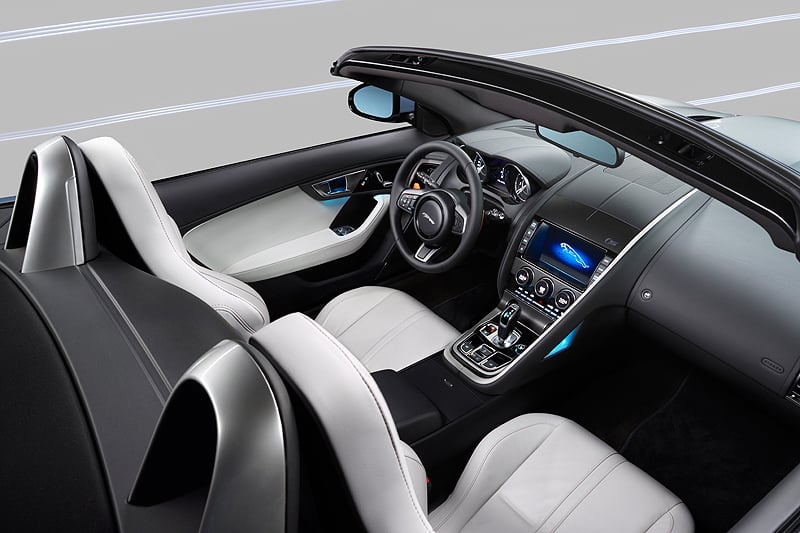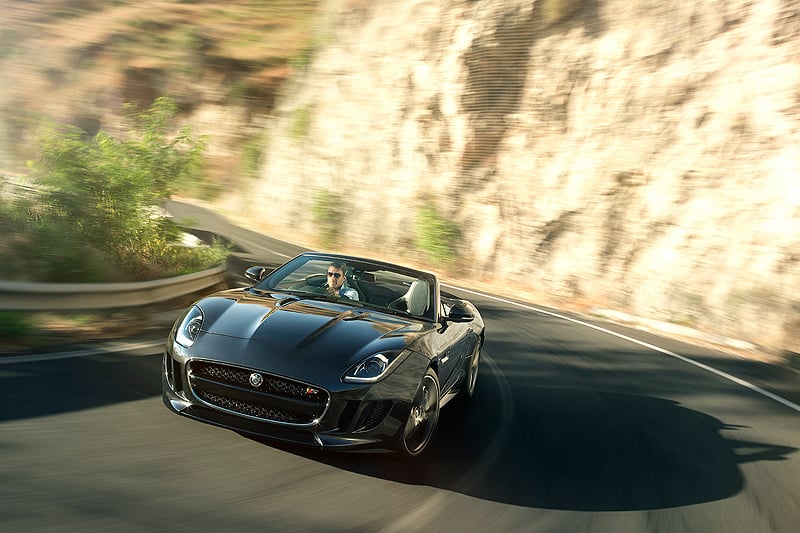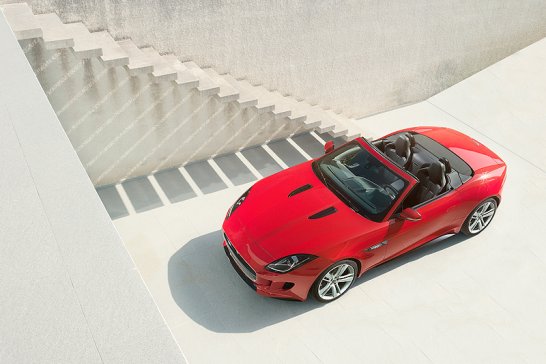“There’s one thing I’d like to clarify,” said Jaguar brand Chief Adrian Hallmark during a secret preview of the new F-type in London earlier this month. “We’re not trying to honour the ashes of the dead. For us, it's not about sentimentality – and this is not a new E-type”. But comparisons to the greatest of all Jaguar icons are inevitable. Following on from the successful racing C- and D-types, the E-type arrived in the early 1960s to provide the British marque with long-awaited public success. The E was fast, beautiful and sexy; indeed, it’s still considered one of the most evocative cars of all time. So it’s little wonder that a true successor took more than 50 years to arrive; respect for the original was just too great. There were a couple of attempts, namely project XJ41 in the early 1980s (which grew from the Pininfarina-designed XJ Spider concept of 1978) and the F-type concept from 2000, both dropped by then-parent company Ford in favour of other pursuits.



Indeed, according to Hallmark and Design Director Ian Callum, the brief this time was clear: it had to succeed. This was not just because of the bloodline, but also because the F-type is the pioneer of a new, sportier identity for the brand. Ever since the Tata takeover, Jaguar sales have snowballed and the coming years will see several new models and engines introduced. But of the approximately 76 million cars sold worldwide last year, not even 0.1% of them were sports cars. Therefore, the F-type is not aiming to be a mass-market product, but more a statement on branding, image and attracting a new, younger generation of buyers. Market positioning is interesting; it’s pitched above the BMW Z4 and Porsche Boxster, but below the Aston Martin V8 Vantage and Porsche 911 – and it intends to incorporate the low price and high performance of both segments respectively. That said, numbers are one thing, but sports cars are judged on their emotional values. And the most important stimulus is design.



Those who fell for the looks of the C-X16 concept of 2011 can relax – the new roadster has remained faithful to the coupé design preview. This is due to a reverse-design process pioneered by Callum, which sees the cars designed with production in mind first, and then developed into show concepts – an ‘honest’ method which avoids unrealistic expectations and subsequent disappointments. From an outside point of view, the modern era of Jaguar design does seem to be going from strength to strength. “In line with the original, we strove for the perfect proportions. Therefore, we used aluminium as much as possible to wrap around the technology.” As a result, Callum’s team has retained the classic roadster characteristics: the long bonnet, rearward cockpit and gently-tapering rear deck, while accents are provided by two prominent feature lines. “For us it’s important to retain particular characteristics and dynamic lines from the first sketches right through to the final design,” says Callum. “These organic curves cannot be produced on a computer.” Other noteworthy highlights are the pop-up recessed door handles and the extendable rear spoiler.



Despite its compact appearance, the F-type isn’t a small sports car. At 4.47 metres, it’s only two inches shorter than the new Porsche 911, with a slightly wider and longer wheelbase. The front grille uses a rounded rectangle theme continued from the XF and XJ (rather than the oval element from its yesteryear relative), and inside the new headlights nestle curved LED daytime running lights – according to Callum these so-called 'J-Lights' will translate into future Jaguar models. The narrow tail-lights, however, are one of the few direct E-type references. Inside, the cockpit is comfortable and simply furnished, with a slight angle towards the driver. The instruments are analogue units, while the air-conditioning vents appear only when operational: a popular feature taken from the XF. Again, it seems the philosophy is ‘less is more’. The passenger, meanwhile, is afforded their own dedicated grab-handle, surely as much of a psychological hint at the car’s intentions as a useful fixture.

So, what's under the bonnet? From launch, three engines will be available: two 3.0-litre, six-cylinder powerplants, and a 5.0-litre V8, all breathing through a supercharger. The entry-level 340HP V6 accelerates to 62mph in 5.3 seconds and on to an electronically limited top speed of 161mph; its 380HP ‘S’ sibling manages 4.9 seconds and 171mph respectively. The ‘V8 S’ will crown the range – at least until a mooted ‘R’ version arrives – with a 4.2-second 0-62mph sprint and 181mph top speed: more than adequate to mount a direct challenge to offerings from Porsche and Aston Martin et al. Gearchanges come from an eight-speed ‘Quickshift’ automatic transmission with the distinctive Jaguar pop-up central selector and steering wheel paddles, while a traditional manual is still being considered.



We aim to provide long-awaited answers about the Jaguar F-type’s driving dynamics within the coming weeks. The package already sounds promising; the mid-level V6 S boasts a limited-slip differential, the halo V8 S an active e-diff for maximum traction. Also included on S-models is an Adaptive Dynamics programme with separate settings for throttle response, transmission behaviour, suspension and steering weight. Furthermore, the aluminium architecture of the F-type is naturally stiff and light – and apparently offers a 10% increase in torsional rigidity over the XKR-S, which we hardly found lacking in that area. On the more gimmicky side of proceedings resides a stopwatch, a G-force meter and a button to heighten aural drama. But in terms of public interest, the car is already making enough noise as it is. And that’s even before prices are officially announced, which will finally signify the declaration of war. Which version is the sweetest? Ian Callum explains his pick of the trio: “The V8 is obviously colossal, but I especially like the V6 S – the six-cylinder sound is really special.” We can’t wait to experience it.
Photos: Jaguar
















